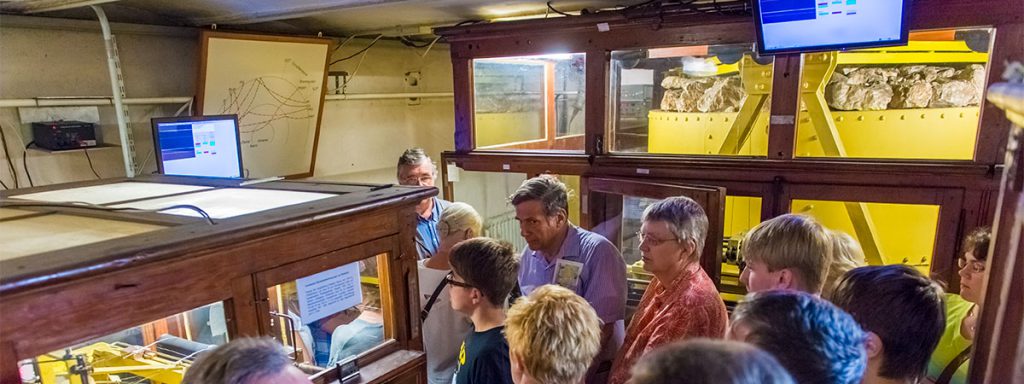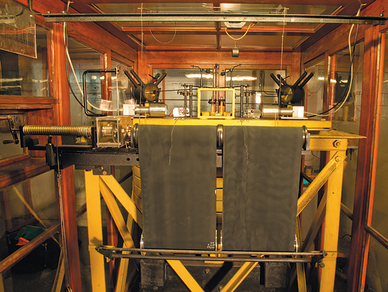
Astatic horizontal seismograph
The devices from the workshops G. Bartels and Spindler & Hoyer, Göttingen, set the standard worldwide until the early 1960s
(From: Schreiber, 2000) “Roughly speaking, all seismographs are based on the principle that a movable, suspended or standing mass initially remains at rest due to its inertia, whereas the suspension system connected to the ground moves. This is an inverted pendulum, where the mass (steel cylinder of 80 cm diameter and 40 cm height) weighing about 1,200 kg is mounted on a Cardan flat spring mechanism in unstable equilibrium (Cardan suspension: two intersecting pivot bearings at right angles to each other, for example in gyrocompass used on ships). The pivot point on the ground is located about 90 cm below the mass centre.”
Via a lever system to styluses
The relative movement between the mass and the pivot point is transmitted via a lever system to styluses for both the east-west and the north-south component; the styluses record the movements on sheets of smoked paper, which are changed on a daily basis. The magnification can be adjusted between 100- and 300-fold; the normal setting is 160-fold. The writing speed is about 16 mm/min; the paper feed is regulated by a mechanical clockwork driver. The natural period is set to about 11 s.
Substantial improvement: air damping
Both components feature an air damping system. This constitutes a substantial improvement of all Wiechert seismographs compared to previous seismographs. This was the main reason why they were the first to deliver seismograms that allowed conclusions to be drawn about the true ground movements.
The instrument installed here was developed by Wiechert in collaboration with the mechanical workshop of G. Bartels, Göttingen. It has been continuously recording seismic movements since 1902, with just a few interruptions due to maintenance work. It is the prototype for similar instruments which set the standard for many observatories (more than 150 worldwide) over decades and are described in detail in classic textbooks of seismology; the series production was later on carried out by the company Spindler & Hoyer, Göttingen. The first detailed descriptions are provided by Wiechert [1903; 1906].
This instrument is actually so sensitive that the “ground deformation” caused by the weight of a person standing next to the seismograph already entails clearly visible needle movements.



